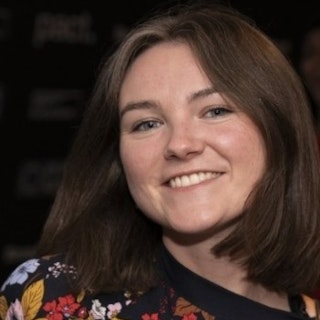‘PR as a metric for purpose doesn’t tell you anything,’ says Dove’s Firdaous El Honsali
The Dove global marketing lead, who is the jury president for the social purpose categories at The Drum Award Festival this year, explains the dos and don’ts of creating purposeful campaigns.

Firdaous El Honsali a judge at The Drum Awards Festival 2024 / Dove
“If you are looking for PR, you are doing purpose wrong,” says Firdaous El Honsali, vice-president for Dove global and North America.
Sitting down with a publication that publishes brand purpose stories, El Honsali says that marketers getting a campaign in The Drum isn’t a marker of success. “If your metric is the PR you created out of it, then that doesn’t say a lot. Then, you’ll be stuck in a position where you need something new every time to drive more PR.”
The newness, she says, instead needs to come from the execution rather than purpose itself. “Whatever social impact you commit to needs to be constant; it’s your awareness campaigns that should deliver PR.”
Explore frequently asked questions
Brands should be measuring the impact on peoples lives or on the planet. So, how many kids did you encourage to play sports? How many hectares of forest did you restore? This should then be benchmarked to make sure the impact is significant enough.
It’s El Honsali’s personal and professional mission to prove the business case for brand purpose. She is taking it upon herself to share the expertise learned at Dove, not just in setting purpose but from execution through to the right metrics to measure.
When it comes to social purpose, El Honsali considers it “critical” that brands actually try to solve real-world problems. “Are you matching a real problem with a real solution? I want to see real social impact, things that are actually making people’s lives better,” she says.
Social purpose has been through a tumultuous period over the past few years, with people and the press getting increasingly cynical about brands using it for marketing purposes.
All this has led to what people are dubbing ‘purpose hushing,’ which is now holding back some brands from promoting their purpose initiatives. El Honsali rejects this and instead urges marketers to be more vocal. “I want to see brands less shy when they do social purpose and shouting about it.”
Her final call out to brands is to do purpose at scale. “I want less of the one short activation that buys you a lot of PR and instead a commitment for the next 10 to 20 years, with plans to expand and scale it each year.”
Real beauty around the world
Dove products are sold in over 150 countries and El Honsali is responsible for setting the marketing agenda in each. “What has enabled me as a marketeer to do a good job from a global perspective, but also a local perspective, is the fact that this brand is very clear about its center of gravity. We have a clear point of view that beauty should be real and that we should enable women to feel good about themselves.”
Advertisement
A lack of diversity and representation in beauty is a global issue, meaning Dove’s purpose is relevant in every market it operates, but the pain points that create it can have cultural differences.
For example, Dove launched its ‘Reverse Selfie’ campaign in every territory apart from India where local insights told them social media pressure wasn’t the main issue impacting beauty. In India, the so-called ‘beauty tests’ young girls are put through by relatives to find them a husband was a bigger cause of concern for self-esteem, according to Dove. The resulting ‘Stop The Beauty Test’ campaign only made sense in India, El Honsali explains.
“You need to have a clear point of view, where there is a common truth to your consumer around the world, then the way it plays out is your awareness campaign. This then needs to be very rooted in the culture by looking at the insights and understanding what is resonating with your consumer and where the pressure points are coming from.”
Advertisement
El Honsali is Moroccan and French and tells The Drum that she sees the world differently from others and that this thinking needs to be considered by global marketers when working with local teams.
Beauty in an AI age
GenAI has been the latest global issue Dove has taken a stance on in relation to beauty. Dove is embracing AI for marketing efficiencies, but it draws the line on publishing AI-generated people.
“When you prompt ‘confident women,’ chances are very high that you’re going to end up with an output that is very narrow, that is very western-centric and that will lack diversity when it comes to the color of skin or textures of hair.”
Suggested newsletters for you
In this space, Dove has created an AI prompting guide aimed at advertisers to help generate more diverse images and has put out the ‘Turn Your Back’ campaign, which took a stance against TikTok’s AI filter Bold Glamour.
“We are looking at what the future holds and we are seeing that representation and diversity is clearly threatened by AI,” she says of Dove’s stance on AI.
